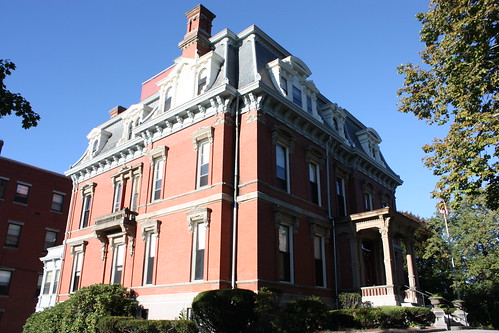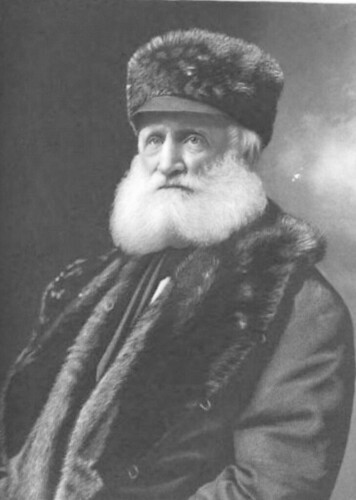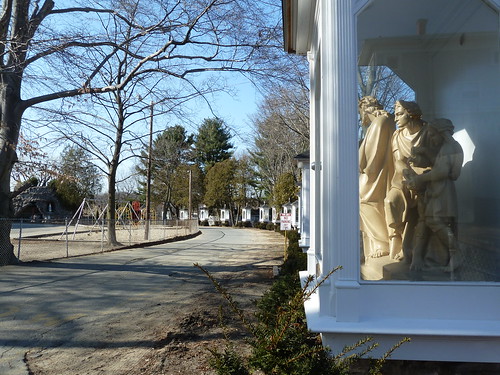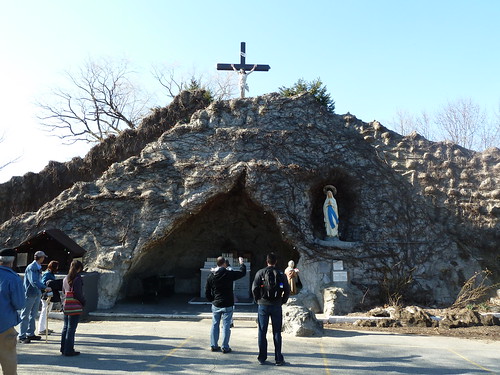Franco American School: Some history

The Sun’s Chris Scott reports that the Franco American School, which closed as a school this past June, will be sold to a partnership of the Coalition for a Better Acre and TMI Property Management & Development which plans to convert the school into 40 units of market and affordable housing. The developers plan to preserve two religious sites located at the rear of the property: A trail of 14 Stations of the Cross that was installed in 1912, and the Grotto, a cave-like structure that features a life-sized statue of Jesus on the cross. To the rear of the Grotto is the start of the Northern Canal. On the other side of the canal is the start of the Northern Canal Walkway which goes all the way to the Tsongas Arena.
Located alongside one of the earliest bridges across the Merrimack, the site of the Franco American School has always been an important place in this region. As the eighteenth century drew to a close, that parcel was owned by Phineas Whiting who maintained a house and a store on the premises. Whiting also owned a farm that extended almost to the Concord River, through what is now downtown Lowell. He and one of his neighbors, Josiah Fletcher, formed a partnership and purchased Thomas Hurd’s woolen mill which was located on the west bank of the Concord River, just upstream from the Pawtucket Canal (right where the Lower Locks Parking Garage is now located).
When Lowell received its town charter in 1826, Whiting’s home was still just one of a dozen structures along that stretch of Pawtucket Street. Most of the early growth of Lowell occurred closer to downtown and the newly constructed power canals.

Frederick Ayer
In 1859, another Phineas Whiting, sold the Pawtucket Street parcel to Frederick Ayer for $9000. Ayer had come to Lowell just eight years earlier to assist his brother, James C. Ayer, in the latter’s patent medicine business. That business was extremely profitable, so the Ayer brothers went from poverty to riches in a very short time. By 1876, Frederick had replaced the old Whiting home with a three-story brick mansion, one of the most ornate buildings in Lowell at the time.
Frederick Ayer added to the size of his land holdings the following year (1860) by purchasing an adjoining parcel of 67,000 square feet that bordered the Merrimack River from the Proprietors of the Locks and Canals for $3300. Ayer added a final piece to his homestead in 1889, paying Harrison W. Streeter $12,000 for a 13,200 square foot strip of land along what is today known as Fanning Street, but was then called Beacon Street. (Also in 1889, there was a street behind the Ayer parcel, running alongside the river. It was called Falls Street).
In 1899, Frederick Ayer and his family moved to Boston and the Ayer Mansion in Lowell sat vacant until July 15, 1908, when Ayer conveyed the property for $1 to Joseph Campeau, Joseph Lefebvre, and Leon Lamothe, three Catholic priests at Lowell’s St. Jean Baptiste Parish. The property would be a home for orphaned children and would be operated by the Sisters of Charity of Quebec.

Stations of the Cross on grounds of Franco American School

The Grotto
In April 1909, members of Lowell’s French Canadian community organized a Massachusetts corporation called L’Orphelinat Franco-Americain and on April 30, 1909, the three priests conveyed the former Ayer Mansion to the corporation. In 1912, a four-story brick wing was added to the back of the home. In 1964, the corporation’s articles of organization were amended, changing the corporate name to Franco American School of Lowell Inc. The school continued to operate until his June when classes ended for the academic year.
What a shame that this is being converted to 40 units. Doesn’t Lowell ever save historical buildings? How are the Stations of the Cross and Grotto going to weather 40 units of people? Our courthouses will be sold soon. Will those also be sold to UMASS or converted to housing?Lowell’s future vision needs to be considered for some of these sales.
My older brother Frank remembers the orphanage well as he was sent there by my Mom who was pregnant with me at the time in the early 50’s. The story goes that he was too much to handle while Dad was building a new home for her in Centralville..they used to live in Chelmsford and at 7 years old, Francis liked to walk off to the nearby quarries. He only stayed with Les Bonne Soeurs for a few months, Mom took him back! In the end the Grey Nuns did him some good as he became a priest and made his Mom very proud.
the only home I knew I still call the nuns who are in Canada now
My mother and her two sisters and a brother were placed at the Franco American Orphanage at very young ages because their mother passed away because he had to work and not be home except on the weekend that is where they remained until they became of age to leave, one of my aunts never left she became a Grey Nun of the Cross and taught at the school for many years. The Grotto has been a special meaning to many in the city of Lowell, finding that place to pray and meditate. I often took my grandson Nicholas there to talk about Jesus and say prayers, at his young age he would say to me ” Memere can we go to the infirmary ” I was amazed that he used those words as a little boy he must of had the consciousness to know that there is healing at the cross of Jesus. The Grotto is truly a place where Jesus is honored, worshipped and glorified.
My mother and her sister were in the orphanage for a while when my grandmother was ill. General MacArthur’s mother was also born in the orphanage. Singer Bob Dylan visited the Grotto when he was in lowell. There are photo’s of him there on the site you know your from Lowell. I think the Historical society should have saved the building. What it going to be used for in my opinion will ruin it.shame.